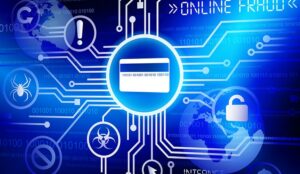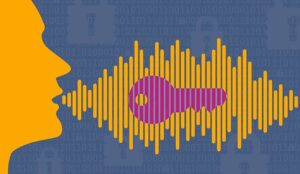Brett Beranek of Nuance discusses how biometrics systems can help to safeguard the contact centre.
With a massive shift to work-at-home, enterprises need to be aware of evolving threats and fraudsters looking to take advantage of this societal change.
With biometric solutions, enterprises can keep bad actors at bay, ensure the connections they need to make with customers are safe and secure and allow their organizations to adapt rapidly to emerging threats.
Fraudsters don’t stop their crimes because of a pandemic. They often seize the immense change that comes with an event like this to ramp up activity.
There is a significant increase in fraudster attacks against call centres, testing for vulnerabilities by directly attacking work-at-home agents or, alternatively, pretending to be remote agents to test for weaknesses that may allow them to perpetrate fraud.
To keep bad actors at bay and ensure the security of their operations and customers, both government and private sector organizations must arm themselves with tools that will keep disruptions caused by fraud to a minimum.
Organizations who have deployed biometrics are finding the technology to be incredibly useful in this effort because it can identify fraudsters, instead of relying on more traditional methods focusing on established suspicious transactional patterns.
There are applications for biometrics to help solve some of the new and more complex challenges organizations are facing today:
Safeguarding Customer and Agent Experiences
As contact centres struggle to cope with the influx of enquiries generated by the pandemic, it’s all too easy for a slow, stressful service interaction to send everyone’s day from bad to worse.
Biometric authentication can play a crucial role in not only speeding resolutions and freeing up agent time but ensuring frustration levels are kept to a minimum by not creating unnecessary friction between the customer and agent.
Also, biometrics can eliminate the need for any overt identification and verification process and remove pressure from frontline agents, reducing the chances they will make mistakes during a call.
Fighting the New Influx of Fraud Attempts
Many organizations, including financial institutions, insurance companies, telecom providers, and citizen-facing government agencies, are seeing a massive surge in call volumes as brick-and-mortar locations shut down.
And, in some cases, they are seeing an enormous increase in enquiries and transactions across digital channels. With this surge, it’s a big ask to expect customer care agents to separate fraudsters from real customers while trying to address customers’ needs. After all, it’s a customer care agent’s role to focus on helping customers.
Biometrics proves to be an invaluable tool to automatically identify when fraudulent calls are being placed – removing pressure from frontline customer care agents and protecting them from social engineering.
Letting Agents Safely Work From Home Without Comprising Security
Empowering agents to work remotely comes with a set of challenges, especially in the case where agents are using their personal laptops, desktops, and mobile phones on the job.
This rapid shift to work-at-home agents has created countless opportunities for fraudsters, as the usual systems protecting contact centre facilities are no longer present.
There is vast potential for biometrics to improve internal security checks in these situations by verifying the identity of agents and preventing fraudsters from taking over agent accounts.
Biometrics authentication also allows organizations to display less personal information on their customers to agents, which consequently reduces the risks of occupational fraud in a remote-work context where the lack of direct supervision represents an opportunity to bad actors within organizations.
Author: Robyn Coppell
Published On: 28th Apr 2020 - Last modified: 10th Jan 2025
Read more about - Guest Blogs, Brett Beranek, Nuance



































